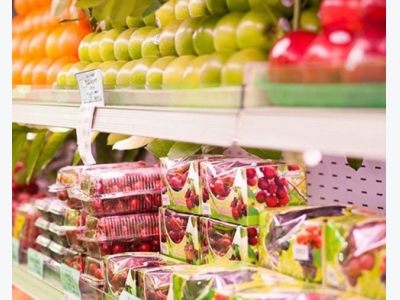Stiff import competition – an opportunity for the fresh fruit segment

Fresh fruit imports into the major metropolitan areas of Vietnam have been growing rapidly since the beginning of the year, thanks in part to the country’s growing middle income population, experts have said.
The comments came after the Vietnam Fruit & Vegetables Association reported that foreign fresh fruit consignments into the Southeast Asian country surged more than 40% in the early months of 2017 and could likely hit US$1 billion by year’s end.
The Association report noted that a survey of supermarkets in the Ho Chi Minh City districts of Thu Duc and Hoc Mon reported that approximately one-fourth of their fresh fruit sales were imported.
This shows unequivocally, said the responding supermarkets, that the potential for the foreign fruit segment has yet to be fully realized, given the enormous potential nationwide demand.
The report noted that more than 50% of imported fruit is sourced from Thailand followed by China, Australia, the Republic of Korea, the US and Myanmar in descending order of magnitude.
Mangos and custard apples from Thailand along with oranges from China are the most popular imports. Other well-liked imports are apples, oranges, pears, kiwi, cherries and grapes from New Zealand and Australia.
Changing trend
What is happening is that the trends in Vietnam are moving toward health. And much of that is happening in the food segment, said Le Quoc Phuong, deputy director of the Ministry of Industry and Trade Information Centre.
Increasingly we see an uptake in more expensive imported products and produce due to the rise of incomes, e-commerce, and the fact that delivery is not a challenge for metropolitan areas of Vietnam anymore, Mr Phuong said.
He said he doesn’t have a problem with imports of fruit that farmers in the country can’t produce but wants protectionist barriers erected by the government to prevent imports that compete with local farmers.
However, he readily admits that the segment needs to invest more in high-tech agriculture to produce cleaner products and seize the initiative to prove to domestic consumers through better marketing that the country’s produce is high quality and safe to eat.
Competition is good for the fruit segment
Nguyen Huu Dat, general secretary of Vietnam Fruit and Vegetables Association, has a different take on the situation.
Growers, traders and producers in the fruit segment must learn how to generate higher-quality goods and market those items to be competitive in the domestic as well as international markets, said Mr Dat.
Tougher import competition, he said, should lead farmers and others in the segment to make better decisions and upgrade the quality of their goods and improve their marketing skills.
Vietnam today finds itself moving into the middle-income class. As a rule, higher-per-capita-income countries produce and export first-class products and that is the challenge that the fruit segment faces.
Contrary to widespread belief in Vietnam, lower tariffs on exports for countries that produce low quality goods discourages quality upgrading. Quality upgrading of produce like any product only results from open markets and stiff competition.
Stiff import competition, said Mr Dat, should be viewed as an opportunity by the fresh fruit segment that could lead to better produce, higher domestic and export sales, improved earnings— and to a better quality of life.
Related news
Tools

Phối trộn thức ăn chăn nuôi

Pha dung dịch thủy canh

Định mức cho tôm ăn

Phối trộn phân bón NPK

Xác định tỷ lệ tôm sống

Chuyển đổi đơn vị phân bón

Xác định công suất sục khí

Chuyển đổi đơn vị tôm

Tính diện tích nhà kính

Tính thể tích ao



 Vietnam to ban antibiotics in livestock farming
Vietnam to ban antibiotics in livestock farming  Vietnam strive to curb antibiotic in animal breeding
Vietnam strive to curb antibiotic in animal breeding